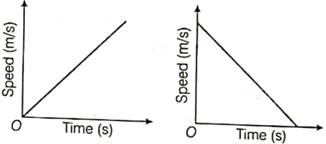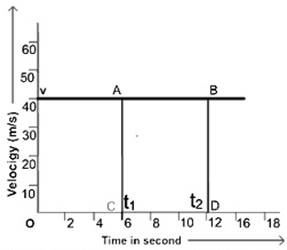(i) If the velocity-time graph of an object is parallel to X-axis, then what does it mean? Can it be parallel to Y-axis?
(ii) What type of motion is represented by each one of the following graphs?

(iii) A bus increases its speed from 36 km/h to 54 km/h in 10 s. Find its acceleration.
(i) If the line is parallel to X-axis in a velocity-time graph that means that with increase in time velocity remains constant. There will be no acceleration and the body will move with constant velocity. It cannot be parallel to Y-axis because it will mean that time is constant but velocity is increasing which is practically not possible.

(ii)

The first graph represents a body which is moving with a uniform acceleration and the second graph represents a body which is moving with uniform retardation.
(iii) Initial velocity = 36 km/h = 10 m/s
Final velocity = 54 km/h = 15 m/s
Acceleration= ![]() =
= ![]() =
=![]() = 0.5 m/s2
= 0.5 m/s2